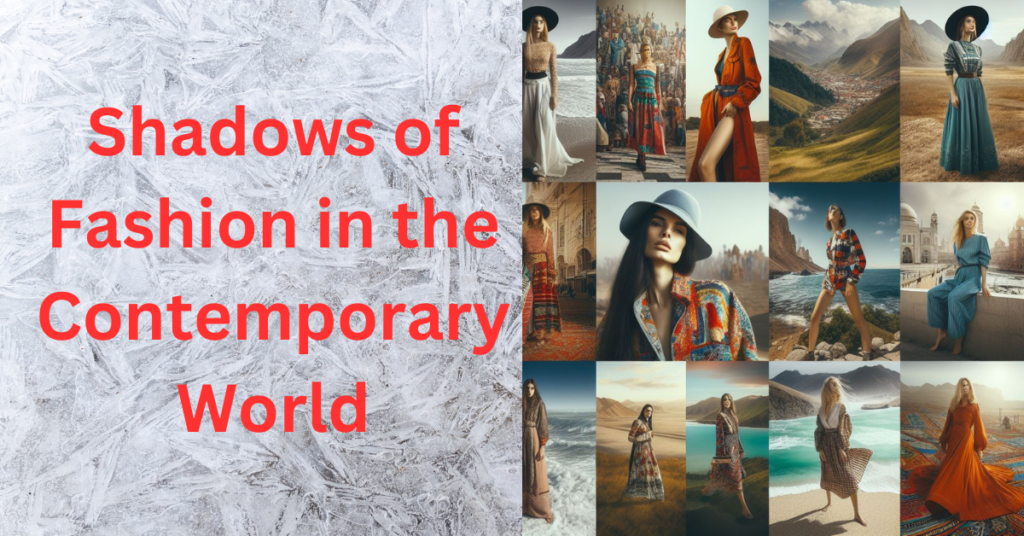Dr. Ashwani Kumar and Dr. Vikas Bhandari
In the era of modern society, showcasing the body or ‘body presentation’ has become a popular trend influenced by cultural, social, and economic shifts. Body presentation refers to the ways in which individuals present and display their bodies in various social and cultural contexts. It encompasses not only physical appearance but also gestures, clothing choices, and other nonverbal cues that communicate messages about identity, status, and cultural meanings associated with the body. It often leads to the commodification or objectification of body, a reduction of the body to a marketable or consumable entity, emphasizing the commercial or superficial aspects of showcasing the body.
Foucault argued that there are ‘docile bodies’ that have been trained, disciplined, and regulated by various institutions and power structures. These bodies are subjected to control and normalization, shaping them to conform to societal standards and expectations. This article explores how the presentation or showcasing of the body having relationship with pleasure in modern capitalist and post-capitalist societies.

Modern platforms frequently depict the freedom to showcase one’s body in public. It is a complex landscape in which judgments of attractiveness are not apportioned arbitrarily but rather possess a systematic that both reflects and molds the preferences and attitudes of niche audiences. The institution of modern fashion always tries to set a belief that women’s ability to showcase their bodies gives them confidence and a sense of prestige.
In the pervasive culture of body presentation, the commodification of the human form extends its reach into the fabric of everyday life. Advertising, popular media, and social platforms relentlessly contribute to the construction of an idealized body image, fostering unrealistic standards that individuals may feel compelled to emulate. This phenomenon, often fueled by consumerism, perpetuates a cycle where bodies are not only showcased but also meticulously sculpted to fit predefined molds. The pressure to conform to these standards is palpable, creating a nuanced interplay between personal agency and societal expectations. In the pursuit of an idealized presentation, individuals navigate the complexities of self-expression and conformity, negotiating the delicate balance between autonomy and external influences.
The contemporary platforms act as canvases for the liberation of body presentation, portraying it as an empowering act that transcends traditional boundaries. The depiction of individuals showcasing their bodies in public is not merely a spontaneous occurrence; rather, it unfolds within a meticulously crafted landscape where judgments of attractiveness carry a nuanced system. Social media platforms, in particular, perpetuate ideals of beauty that not only reflect but also actively shape the preferences and attitudes of diverse niche audiences. These platforms serve as dynamic arenas where individuals navigate the delicate balance between self-expression and the ever-evolving standards of attractiveness.
Moreover, the institution of modern fashion plays a pivotal role in this narrative, relentlessly promoting the belief that a woman’s ability to confidently showcase her body is synonymous with empowerment and prestige. The fashion industry, with its ever-changing trends and ideals, becomes both a mirror and a sculptor of societal values. Women are often bombarded with messages reinforcing the idea that conforming to modern pressures of body presentation is not only a means of self-expression but also a pathway to societal validation. This perpetuates a cycle where the desire for confidence and prestige is intertwined with the external expectations set by the fashion world and the broader social milieu.
However, it is intriguing to know whether people especially women derive pleasure from the showcasing of their bodies in public or whether they have been commodified by market forces and become the source of pleasure for the masses.
The current trend is unmistakably propelled by market forces seeking to commodify bodies and provide pleasure aspirations to a wide array of potential consumers and their workforce. Historically, traditional organizations and customs held considerable sway over notions of the ideal body, dictating specific criteria for women’s body presentation that no longer align with the expectations of the contemporary market. These age-old standards, deeply ingrained in societal expectations and often reinforced through various cultural channels, imposed rigid roles and aesthetic norms on women. Nevertheless, with the unfolding of modernity, unprecedented shifts began to emerge. The evolving landscape started challenging these entrenched norms, prompting a reevaluation of societal expectations and fostering a transformation in the way bodies are perceived and presented.
This liberation, however, comes with a twofold impact. On one hand, it has allowed women to break away from traditional constraints, encouraging autonomy in self-expression and choices related to their bodies and intimate lives. On the other hand, it has led to the commodification of women’s bodies, positioning them as objects of pleasure in the lens of the masses.
The modern construction of ideal bodies, fueled by media, advertising, and societal norms, has often centered around a particular image of women, emphasizing certain physical attributes and conforming to ever-evolving standards of beauty. Media is always guided by popular trends with the help of the institution of fashion, for instance, institution of fashion created the differentiation of various types of attires. The fashion industry developed the idea for occasion-based attires or dresses like cocktail dresses, a dress code that is suitable for semi-formal events, falling between casual wear and formal wear. It is often requested for events like cocktail parties, weddings, upscale dinners, or other social gatherings that are not strictly black-tie affairs. The goal is to look polished and stylish without being overly formal. If we search cocktail attire for women on Google, we will find the kind of attire that supports the idea of showcasing the body. Similarly, the idea of sexy dresses is also another example that perpetuates the same idea. This commodification and objectification, while granting a degree of freedom, have also imposed new societal expectations, leading to the policing of women’s bodies and perpetuating unrealistic beauty standards. Let’s consider the case of a dance club where people engage in recreational activities such as dancing and people are free to consume alcoholic drinks. Essentially, we can say that dance clubs as a platform in modern society for seeking pleasure. There is a norm for women to come in cocktail or sexy dresses, commonly known as club dresses. This reflects the idea that the club is also attempting to portray women as a source of pleasure.
In this shift, traditional norms that once compelled women to fit within narrow confines of acceptability have transitioned into a modern framework where women’s bodies, though seemingly liberated, are often objectified, and commodified for mass acceptance. Understanding the complexities of modernity’s impact on the construction of ideal bodies requires a nuanced perspective one that acknowledges the liberation from traditional constraints while also recognizing the commodification and objectification that modern societal constructs impose. It calls for a continuous dialogue that empowers women to reclaim agency over their bodies and desires, transcending the confines of societal expectations and strengthening a culture of genuine acceptance and autonomy. The question that arises here is: Can the source of pleasure lead a pleasurable life?
The views and opinions expressed by the authors in this article are their personal opinions and do not represent the views of PureSociology. You can contact the author/s at [email protected]. The details of the authors are:
Dr. Ashwani Kumar & Dr. Vikas Bhandari are Assistant Professors in Sociology and Law (Political Science) respectively.



This thoughtful reflection highlights the shifting dynamics for women in contemporary era. While there’s liberation from old norms, there’s also a challenge with objectification. it’s crucial for women to reclaim control over their bodies and desires promoting a culture of genuine acceptance and autonomy.
Pingback: Kiwi